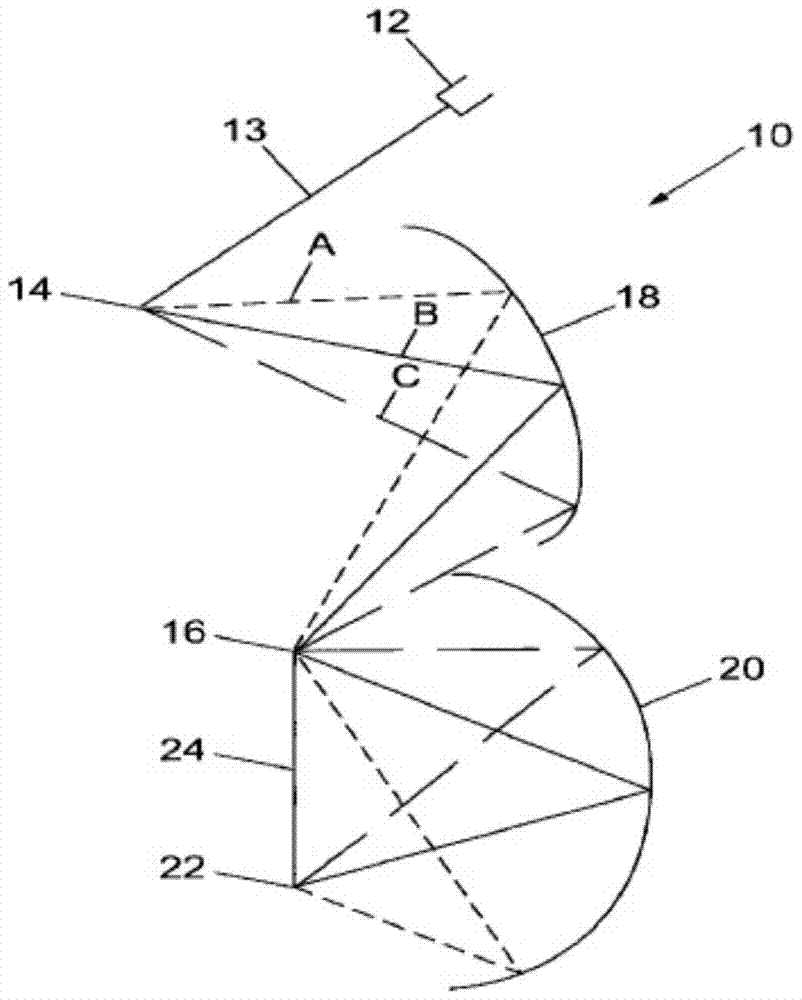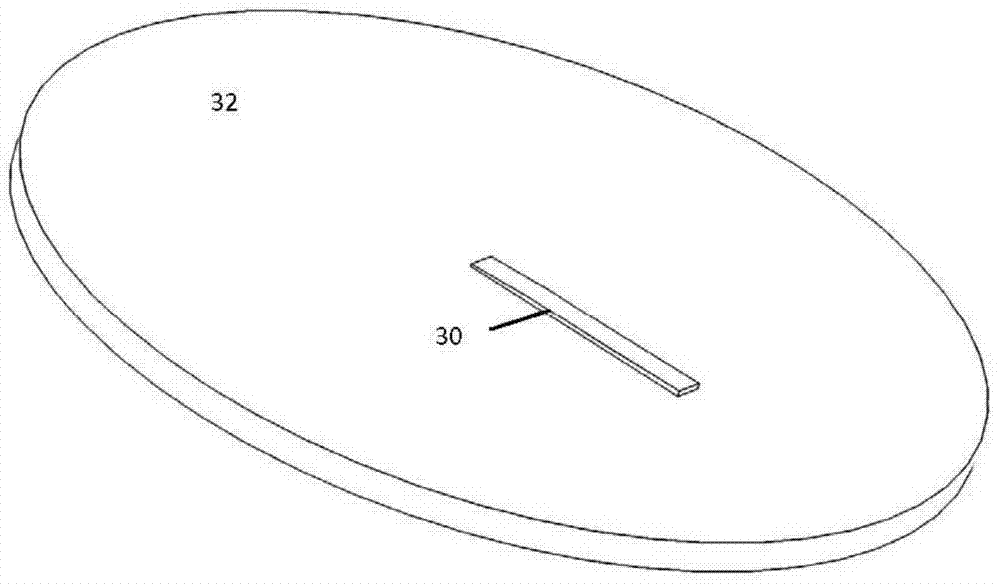Improvements in and related to ophthalmoscopy
An ophthalmoscope and eye technology, applied in the field of deviation correction, can solve the problems of retinal spatial information loss fidelity, low fidelity, unsatisfactory image quality, etc.
- Summary
- Abstract
- Description
- Claims
- Application Information
AI Technical Summary
Problems solved by technology
Method used
Image
Examples
Embodiment Construction
[0038] see figure 1 The ophthalmoscope 10 includes a light source 12 emitting a light beam 13, scan relay elements (including a first scan element 14, a second scan element 16, a scan compensation element 18 and a scan transfer element 20). The first scanning element 14 comprises a rotating polygonal mirror and the second scanning element 16 comprises an oscillating plane mirror. The scan compensation element 18 comprises an ellipsoidal mirror and the scan transfer element 20 comprises an aspherical mirror. The ophthalmoscope 10 also includes aberration correction elements (not shown).
[0039] A light source 12 directs an incident light beam 13 to a first scanning element 14 . This produces a beam scan in the first vertical dimension (shown as rays A, B and C). The incident light beam impinges on the scan compensation element 18 and is reflected therefrom to the second scan element 16 . This produces a scan of the incident beam in the second horizontal dimension. The inc...
PUM
 Login to View More
Login to View More Abstract
Description
Claims
Application Information
 Login to View More
Login to View More - R&D
- Intellectual Property
- Life Sciences
- Materials
- Tech Scout
- Unparalleled Data Quality
- Higher Quality Content
- 60% Fewer Hallucinations
Browse by: Latest US Patents, China's latest patents, Technical Efficacy Thesaurus, Application Domain, Technology Topic, Popular Technical Reports.
© 2025 PatSnap. All rights reserved.Legal|Privacy policy|Modern Slavery Act Transparency Statement|Sitemap|About US| Contact US: help@patsnap.com



